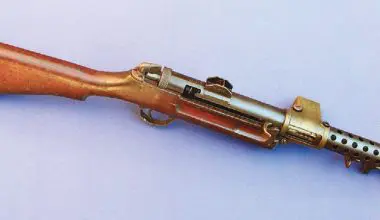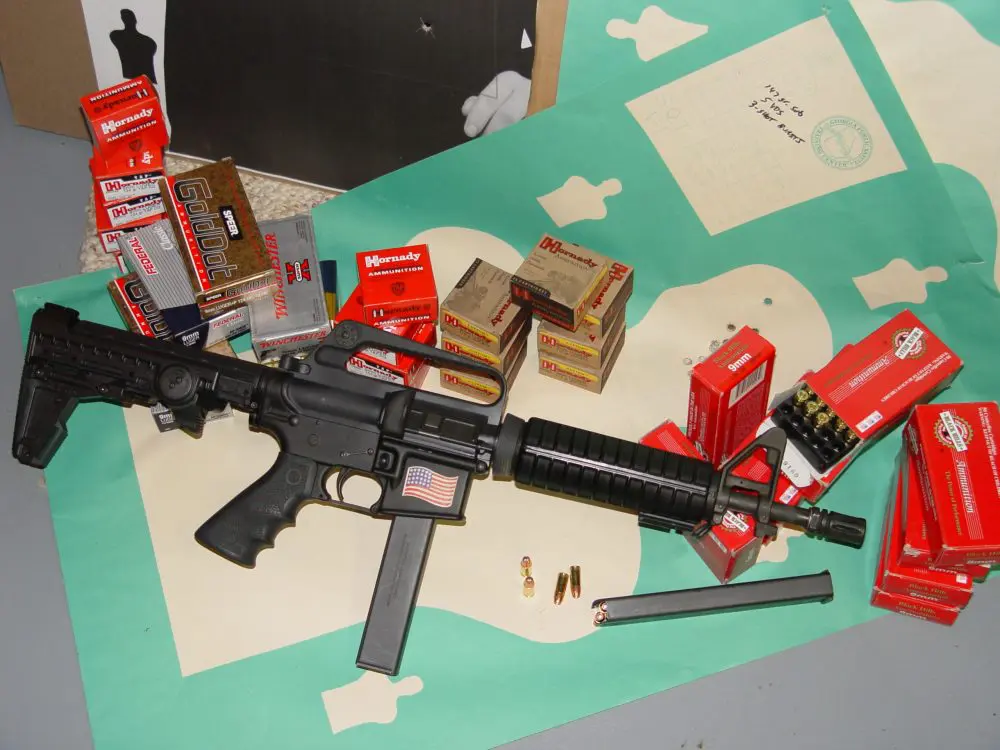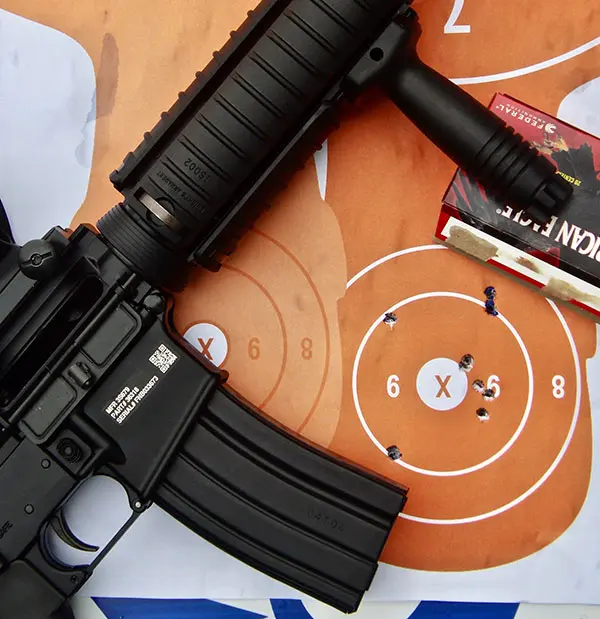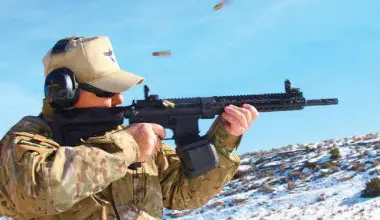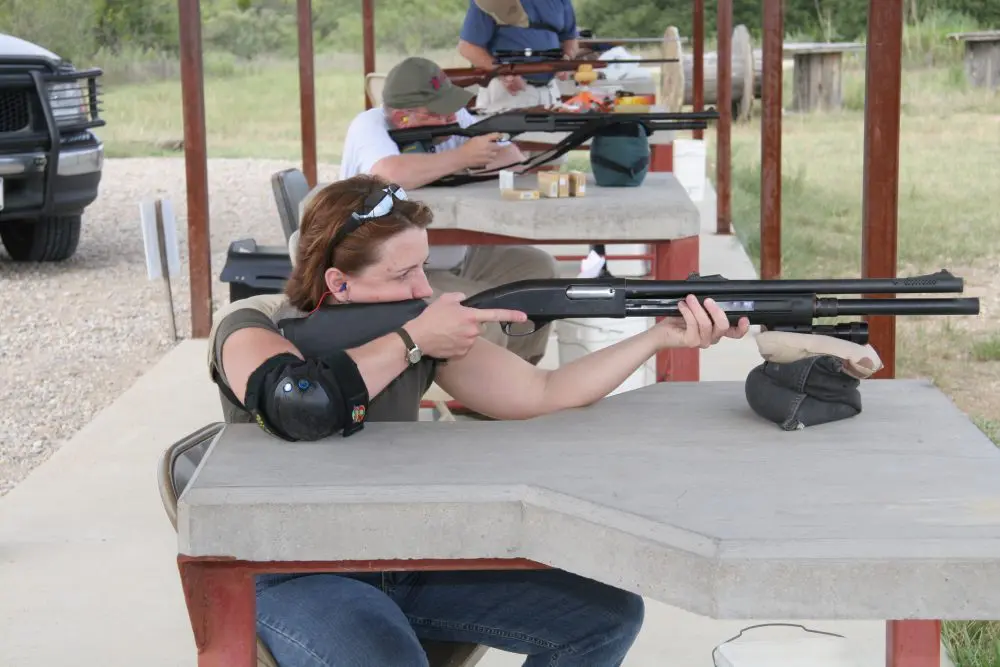I’VE recently spoken to some of my British contacts who were involved in security at the 2012 London Olympics. One of the more interesting e-mail exchanges was about the RAF Regiment heliborne snipers who were armed with shotguns.
Helicopter snipers have generally been armed with self-loading rifles using low-power optics with wide fields of view. Since I’m using British counterterrorist forces as the basis for this article, let me use the Special Boat Service as an example. For many years, SBS heliborne snipers used HK G3 rifles with 4X Hensoldt scopes. More recently, the L129A1 Sharpshooter, built for the British armed forces by Lewis Machine & Tool, has been used by some British special ops snipers from helicopters.
However, for the Olympics and also some airfield security missions, RAF Regiment snipers have been using the L128A1 shotgun, the British designation for the Benelli M4/US M1014 with EOTech 552 sight.
For those not familiar with the RAF Regiment, though part of the Royal Air Force, it is trained to operate as infantry and provide protection for British air bases. The unit also deploys on infantry assignments wherever other British ground forces are deployed.
Within the RAF Regiment, #2 Squadron is airborne qualified and has personnel that perform the missions carried out in the USAF by Special Tactics Squadrons, including TACP and Combat Search and Rescue (CSAR). RAF Regiment snipers assigned to the Special Forces Support Group, which acts in support of the SAS and SBS, are generally considered quite good.
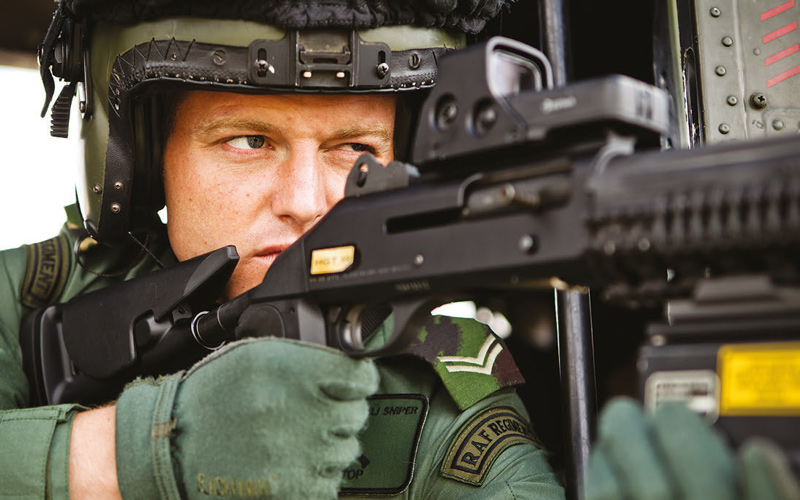
I asked a contact who is a recently retired British special forces operator if he knew why the RAF Regiment had specifically trained helicopter snipers with the shotgun. He offered some informed speculation.
He thought it possible that snipers working with CSAR helicopters might have trained using the L128A1 to give suppressive fire if enemy troops were very close to a downed airman. But he also made the point that since the RAF Regiment works closely with RAF helicopter crews, they would have had more time to work on various heliborne sniper tactics, including those with the shotgun.
Snipers within the RAF Regiment are often assigned to the support weapon flight in each RAF Field Squadron with the mission of supporting rifle flights. Many RAF Regiment snipers have been deployed to Iraq and Afghanistan, and it is also possible that on some heliborne security sweeps, they’ve incorporated heliborne snipers.
It may also be that equipping snipers with the L128A1 just evolved for the Olympics in case of the need for close quarters engagement without fear of over-penetration or over-travel of projectiles in the middle of London. That is certainly a logical explanation for use of the L128A1.
One of my other British contacts rather cryptically told me that RAF Regiment snipers had an “air-to-air” sniping role for the Olympics. I’m not sure whether that indicates they might engage unmanned aircraft or light aircraft with pilots, but that would avoid the use of interceptor-launched missiles or surface-to-air missiles in central London! Certainly, to effectively use the L128A1, the range would have to have been fairly short.
Given that the shotgun was used as part of the Olympic sniping mission, let me talk about the advantages of using the L128A1 shotgun for helicopter “sniping.”
My contacts did not know the specific load the RAF Regiment snipers were using, but I would assume 00 buckshot. Chopper pilots who work with heliborne snipers train with them and practice holding the helicopter in as steady a hover as possible. Nevertheless, there is some movement, which makes precise target acquisition more difficult. As a result, the spread of the buckshot pattern gives a little more leeway if the shot is slightly off. So does the use of an autoloading shotgun such as the L128A1, which allows a fast follow-up shot. Using the holographic EOTech allows target acquisition, but does not require the precise reticle alignment of crosshairs.
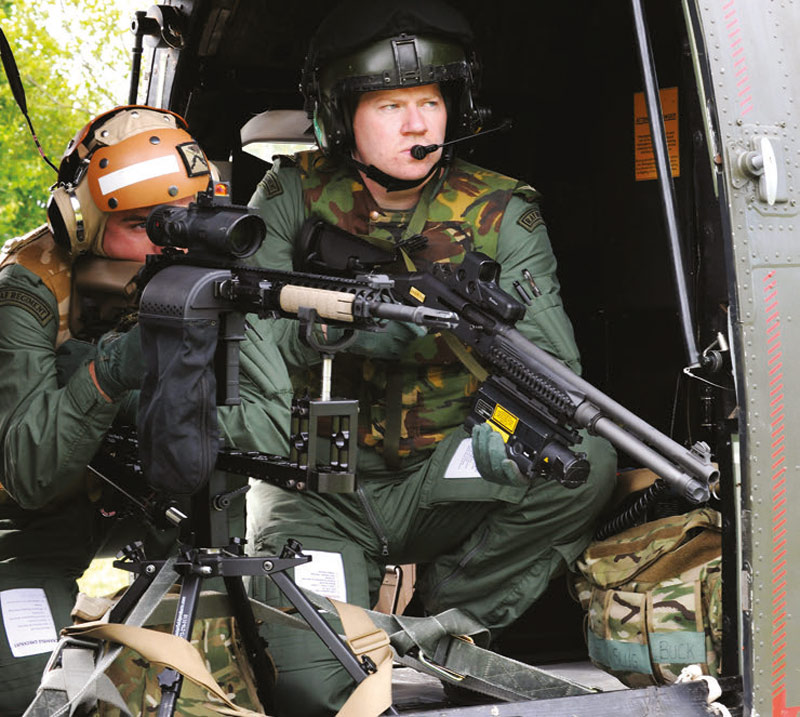
An important consideration in the use of shotguns for helicopter sniping is the range at which the shot will be taken. Generally, heliborne snipers try to take their shots from 50 meters or less. Different loads have to be tried to determine which patterns the tightest at longer ranges. One consideration for use at the Olympics was that a shotgun pellet will not travel as far—or penetrate as much—as a 5.56mm or 7.62mm bullet from another sniping/designated marksman rifle.
In case of a longer shot, for the Olympics, the RAF Regiment paired a sniper armed with an L128A1 shotgun with a sniper armed with an L129A1 rifle. For the rifle, a rest was mounted in the chopper’s doorway. The rifle also had a brass catcher to prevent spent cases from getting into the helicopter’s machinery. I also noticed in photographs that the L128A1 shotgun being used for “sniping” was equipped with what appears to be an IR illuminator, which most likely indicates it was the intended weapon for use should the snipers have to take a shot at night.
The primary disadvantage of the shotgun as a heliborne sniping weapon seems to be its shorter range, but in many sniping scenarios, especially urban, that can be an advantage as well.
Whether the heliborne sniper uses a shotgun or rifle, he requires specialized training with a skilled pilot. The helicopter pilot needs to understand the sniper’s needs and limitations, and the sniper needs to do the same for the pilot. Training will also determine the most effective angle for taking shots, as in cases of ground targets the helicopter will not be at the same level as the target.
On the other hand, for targets in high-rise buildings or on a ship’s superstructures, the helicopter pilot may be able to place the chopper in a relatively good shooting position for the sniper. Although it would seem an obvious point, I’ll mention that the heliborne sniper must learn how to use his safety harness to secure himself yet give himself enough freedom of movement to take shots at different angles.
Many naval special warfare units use smaller choppers, which only have room for one sniper, so the RAF Regiment method of combining a shotgun sniper with a rifle sniper may not work. It makes sense, though, for heliborne snipers to train with both a rifle and a shotgun. Many snipers train with multiple weapons.
I mentioned that heliborne snipers need a lot of training. A friend of mine who has helped me with tactical training made an interesting suggestion for training that could be invaluable. Some outfitters now offer wild hog hunting from helicopters, and I think it would be worthwhile for military special ops units and law enforcement tactical units that deploy snipers in helicopters to set aside some money to send their shooters on these hunts. They’d be shooting at targets that move and getting the experience of having to take the shot from a moving platform.
I’ve also noticed over the last couple of years that some SWAT competitions now include a heliborne sniping element. This not only allows snipers to compete in an event that simulates a shot from a helicopter, but also to exchange information with other snipers who may have developed techniques for helicopter sniping. As far as I know, these events so far have only used rifles or carbines, not shotguns.
One of the ranges to which I have access has a tower used for sniper training. Although it won’t simulate the movement unless the New Madrid Fault acts up, it will give me a chance to shoot from an elevation and angle that can simulate using a shotgun from a helicopter.
Spending a day trying different shotgun loads at different distances using a self-loading shotgun and red dot sight is on my to-do list. It will give me a chance to better judge at what ranges the shotgun can effectively be used when shooting from the height of a hovering helicopter, and give me a better idea which loads work best. I also have put feelers out to contacts in various units that use heliborne snipers to see if they have tried using shotguns and, if so, what they have determined works or doesn’t.
I’m obviously intrigued by the use of snipers armed with shotguns for the Olympics and plan to continue gathering information on the topic.
